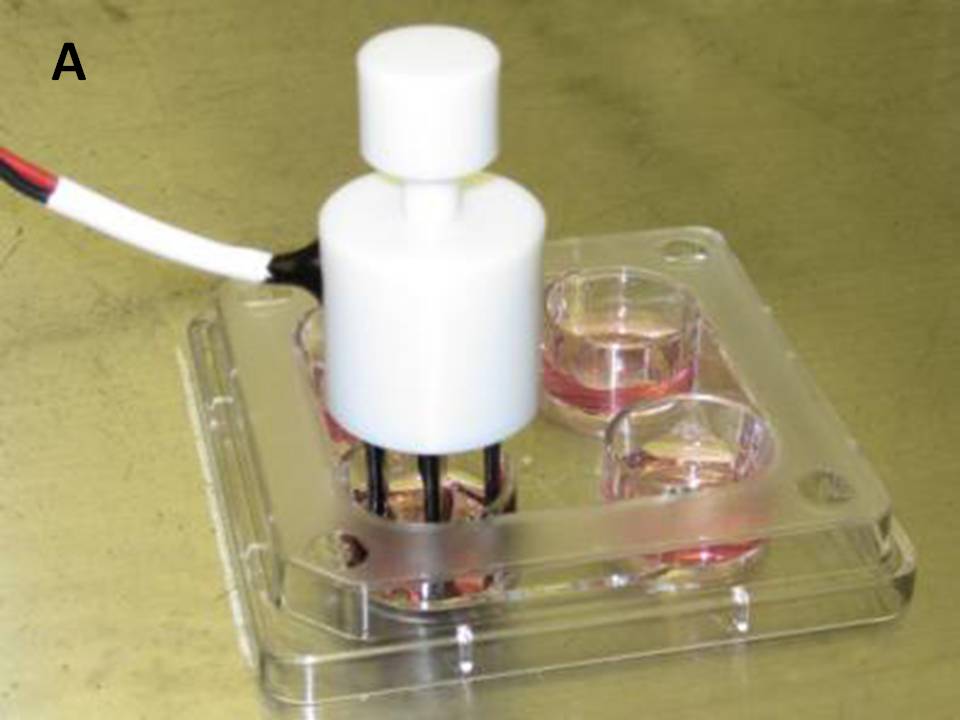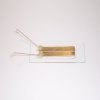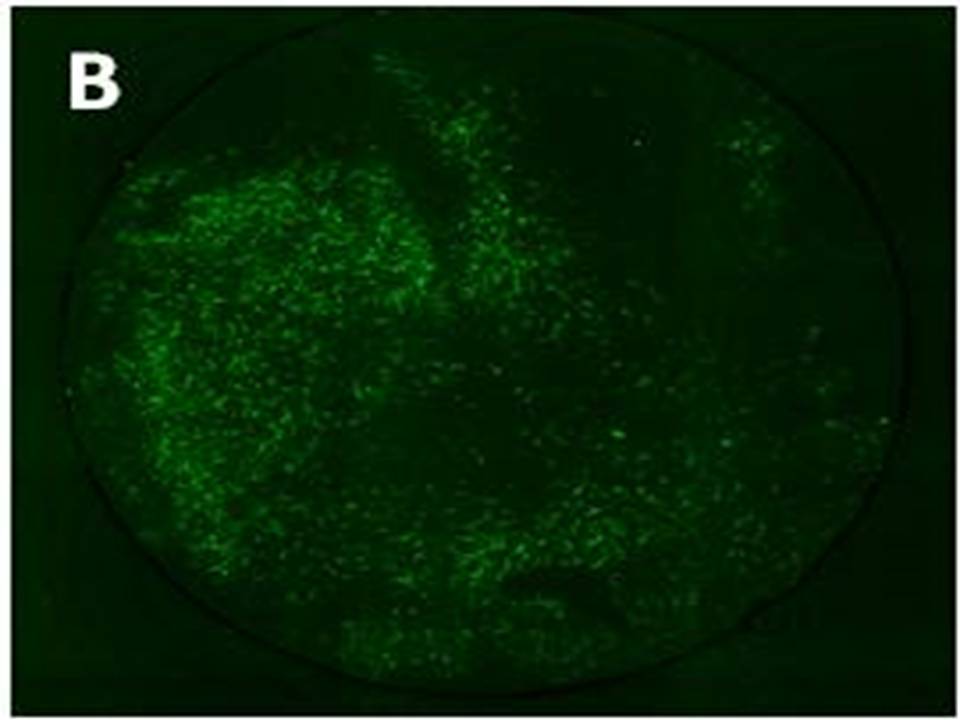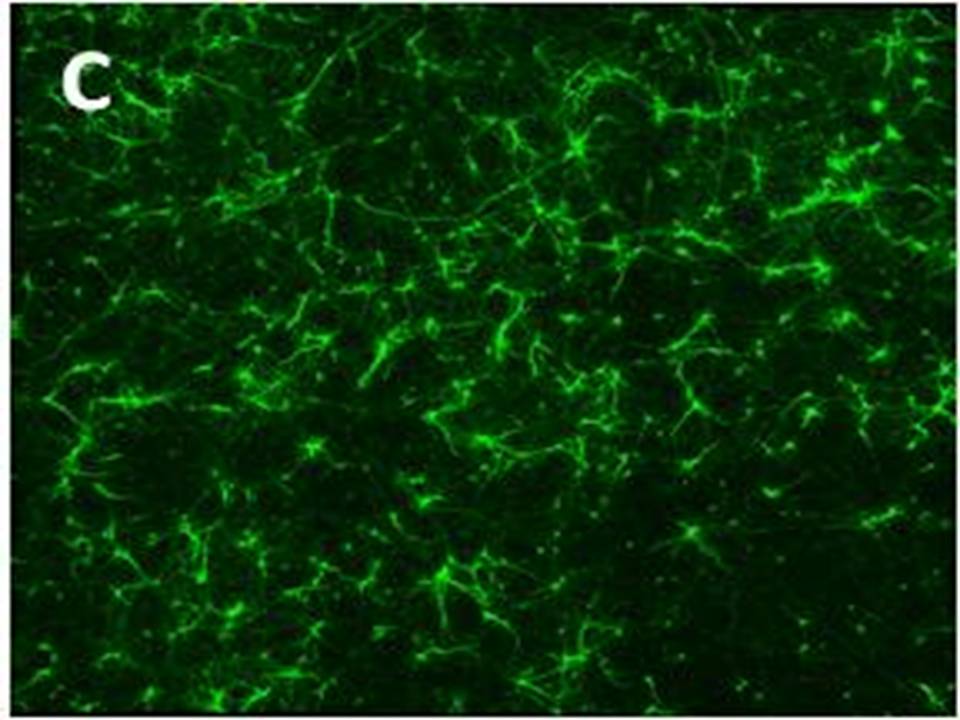Adherent Cells
Adherent Cell Electroporation Applications
Cell Culture Transfection
Transfection in Cell-Culture-Plates/Dishes
It is now possible to transfer DNA/RNA directly into cells ADHERENT CELLS in commercially available multi-well plates. We recommend the use of our CUY900 series electrodes
See the cell images by clicking the cell names.
V: Viability, TE: Transfection Efficiency.
|
Cells |
V |
TE |
Cells |
V |
TE |
|||
|
Species: Human |
||||||||
|
Primary Mouse Hippocampal Neurons |
60% |
50% |
Primary Mouse Hippocampal Neurons (Embryonic day 18) (2 DIV) |
85% |
54% |
|||
|
Primary Mouse Microglial cells |
80% |
73% |
Primary Mouse Glial cells (14 DIV) |
80% |
50% |
|||
| Primary Mouse Stromal cells (1-month cultured) |
90% |
50% |
Primary Rat Cerebral Cortex Neurons (Embryonic day 17) (2 DIV) |
70% |
60% |
|||
|
Primary Rat Hippocampal Neurons |
100% |
50% |
Rat Granulosa cells |
Excel. |
41% |
|||
|
90% |
50% |
EPC Human Endothelial Progenitor Cells | ||||||
|
3T3-L1 Mouse Embryonic Fibroblasts |
90% |
70% |
C6 Rat Glioma cells |
57% |
55% |
|||
Transfection into Primary Neurons
 Click to enlarge |
|
|
|
|
pCAGGS-EGFP plasmid was transferred into primary neurons cultured for 6 days in an adherent state.
The neurons were prepared from E15 mouse cerebral cortex.
|
A): |
2 steps pulse electroporation using our CUY900-13-3-5 electrode |
|
B): |
EGFP fluorescence image of the neurons 2 days after electroporation |
|
C): |
High magnification image of Figure B. Many robust EGFP signals suggest high transfection efficiency. |
|
D): |
High magnification image of Figure C (x40). (Neurites are clearly visible). |
|
Data provided courtesy of Department of Neurochemistry, National Institute of Neuroscience, Japan |
|
We have a lot of adherent-cell transfection data demonstrating high efficiency and high viability. Please feel to free to contact us for further details.
CUY900-13-3-5 Technical Drawing
EP Conditions for single-pulse CUY21 series electroporators
(Contact us for the relevant NEPA21 multi-pulse (with polarity exchange) EP Conditions)
| Model | Electrode | Cell | Voltage | Pulse length |
Pulse interval |
No. of Pulses | Optimal current |
Note | |||||||
| CUY21EDIT | CUY513-5 | Neuron Cell | 110V | 5msec | 99msecor95msec | 5 pulses or 5 pulses, (reverse polarity) | 0.15A | 50-70% confluent Hiporation buffer is added. |
|||||||
| CUY21EDIT | CUY513-5 | Hippocampal Neuron Cell | 110V | 2msec | 98msec | 5 pulses 5 pulses (reverse polarity) |
0.15A | 50-70% confluent | |||||||
| CUY21EDIT | CUY512-5 | Fibroblast Cell | 300V | 5msec | 95msec | 3 pulses 3 pulses (reverse polarity) |
0.15A | Efficiency of gene transfection : 30% Viability : 60% |
|||||||
| CUY21SC | CUY512-5 | Muscle Cell | 80-90V | 10msec | 90msec | 10 pulses 10 pulses (reverse polarity) |
0.17A | 50-70% confluent When current < 170mA, efficiency of gene transfection is low. When current > 200mA, cells are peeled off. |
|||||||
| CUY21EDIT | CUY513-5 | Hela Cell | 7-14V | 60ms | 50ms | 4 pulses 4 pulses (reverse polarity) |
N/A | Peptide transfection | |||||||
Kindly note the following article:
– ‘Expression Regulation of Hyaluronan Synthase in Corneal Endothelial Cells’




.jpg)